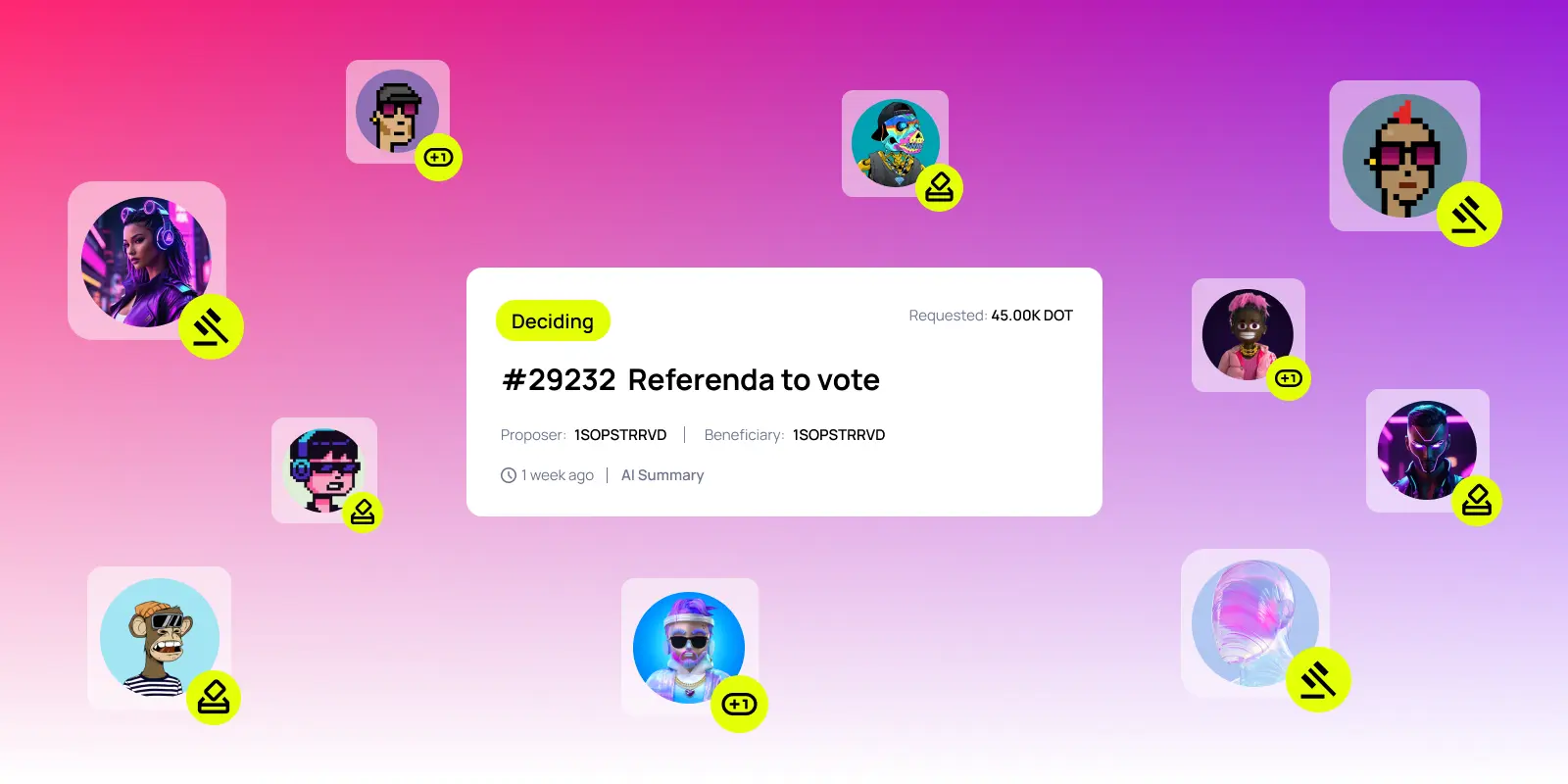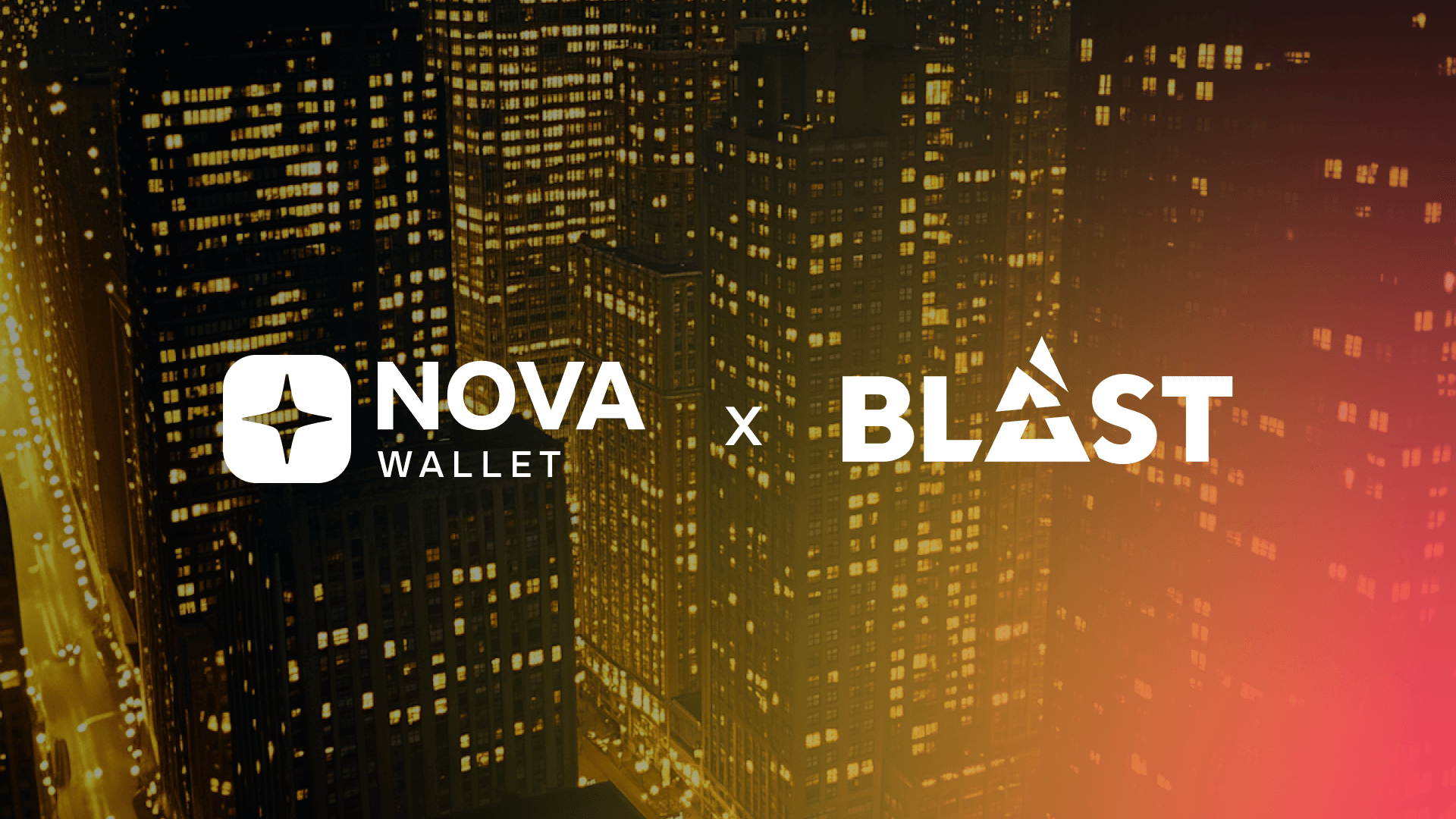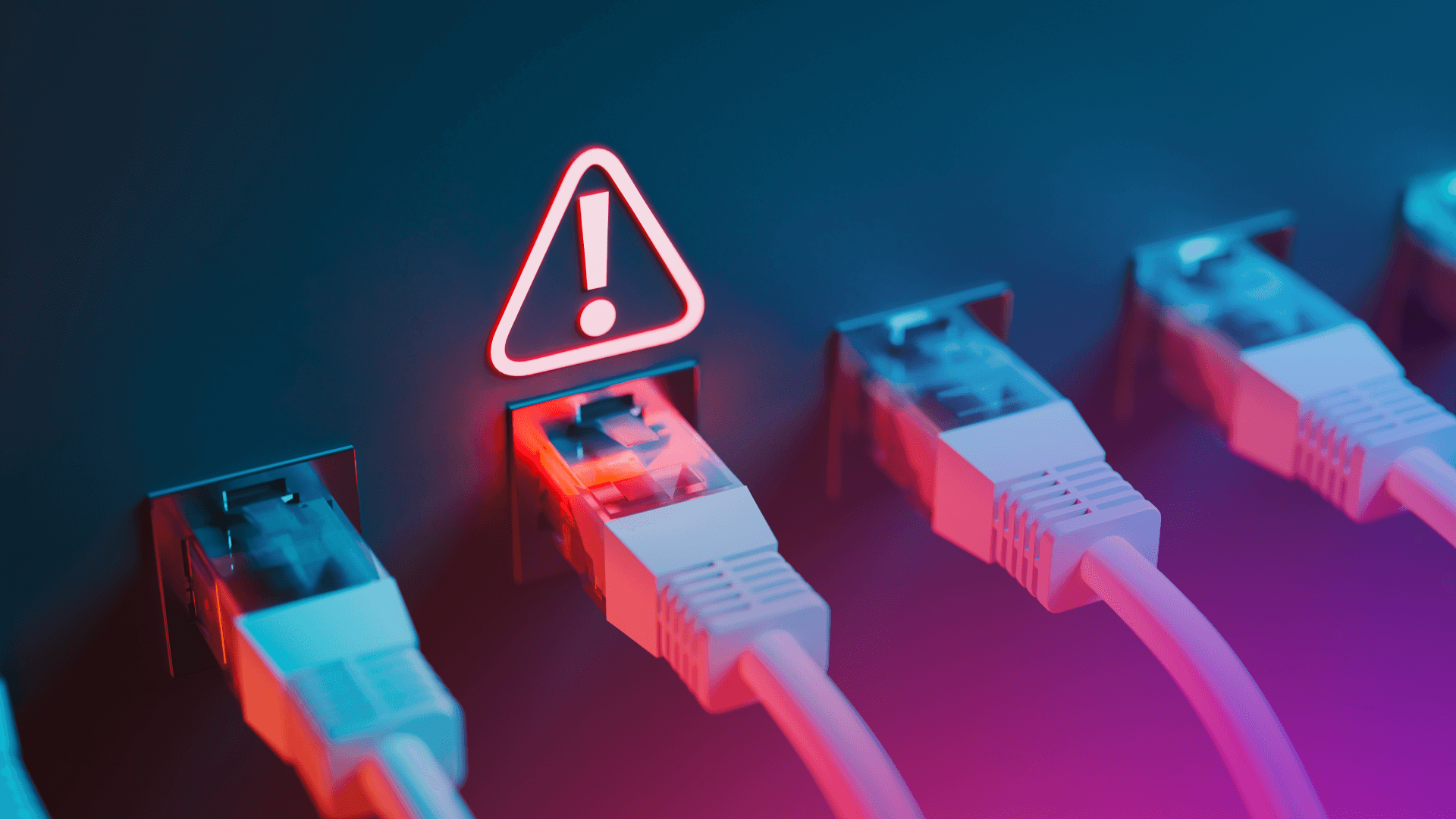What is the Polkadot DAO? A beginner’s guide to decentralized governance
Get a high-level overview of the Polkadot DAO, including how it coordinates funding, decision-making, and participation across the ecosystem, and how you can get involved.

What you can expect
- Learn what the Polkadot DAO is and how it empowers the community
- Get a high-level understanding of how proposals and voting work
- Explore how Polkassembly and Subsquare help you participate in governance
- Discover how the community treasury funds innovation and growth
- Learn how to get started participating in governance
- Understand what makes Polkadot DAO different
A decentralized autonomous organization (DAO) is a community-governed entity that operates transparently through onchain rules and token-holder voting. DAOs are more than just a novel governance model—they are the foundation for decentralized decision-making and resource allocation in blockchain ecosystems.
The Polkadot DAO takes this concept a step further. Built on the powerful OpenGov governance system, it enables the Polkadot community to propose, vote on, and implement changes without relying on centralized intermediaries. It’s not just about discussing ideas: it’s about turning them into action. Today, Polkadot DAO is the largest in the world by total number of onchain wallets, with over 1.3 million participants.
In this post, we’ll explore what the Polkadot DAO is, how it works, and why it matters—not just in theory, but in practice. Whether you’re a seasoned DOT holder or new to Web3 governance, you’ll discover how to get involved and help shape the future of the Polkadot ecosystem.
What is the Polkadot DAO?
The Polkadot DAO is a community-owned system that coordinates funding, decision-making, and growth across the Polkadot ecosystem. It empowers DOT holders to propose changes, vote, and directly shape the network’s future—all without relying on centralized organizations or intermediaries.
At the heart of the DAO is OpenGov, the network’s advanced, fully onchain governance system. Launched in 2023, OpenGov replaced the earlier model of a Council and Technical Committee. Instead, it allows any DOT holder to submit proposals and participate in real-time, continuous referenda. This creates a more open, continuous, and decentralized process where anyone can submit proposals, vote, or delegate their vote.
Voting power depends on the amount of DOT committed to each decision. Voters can also choose to increase their influence by using conviction voting—a system that multiplies voting power when tokens are locked for longer periods. Depending on the lock time selected, a vote can carry up to six times more weight, rewarding long-term commitment while giving all DOT holders a meaningful voice.
Technical oversight is provided by the Technical Fellowship, a decentralized advisory group that replaced the centralized Technical Committee. This ensures expert guidance without creating bottlenecks or gatekeeping.
As the world’s largest by total onchain wallets, Polkadot DAO is setting a new standard for decentralized, community-driven governance in blockchain.
How the Polkadot DAO works: proposals, voting, and participation

Anyone who holds DOT can actively shape the future of Polkadot. Community members can submit proposals, vote directly, delegate their vote, or engage in discussions through platforms like Polkassembly.
Proposals can cover a wide range of initiatives, from funding developer tools and educational events to approving major network upgrades. Once a proposal gains enough backing or completes required steps, it becomes a referendum—an official vote open to all DOT holders.
Voting power depends on how much DOT you commit to the decision, and it can be amplified through conviction voting: a system that increases vote weight when tokens are locked for longer periods. If you’re not ready to vote directly, say you don’t have the time to follow proposals closely or want to rely on more experienced participants, you can delegate your vote to one of Polkadot’s Decentralized Voices (DVs), a Web3 Foundation-supported program that highlights trusted, active contributors in the governance process.
All proposals and referenda are processed entirely onchain, ensuring transparency and eliminating centralized bottlenecks. Unlike traditional governance systems with fixed voting windows, Polkadot’s OpenGov enables open, ongoing referenda, allowing the community to respond to needs and opportunities in real time.
Polkassembly: your portal to Polkadot governance
Polkassembly is the primary platform for engaging with Polkadot’s OpenGov system. It provides an easy-to-use interface where anyone can browse proposals and referenda, participate in discussions, cast votes, or delegate their voting power to trusted community members.
Through Polkassembly, DOT holders can:
- Submit proposals or track existing ones
- Vote on active referenda
- Comment and discuss proposals with other community members
- Delegate voting power to others who share their vision
In addition to Polkassembly, Subsquare offers an alternative interface preferred by many community members for its streamlined user experience. Each platform has its pros and cons, and users often choose the one that best fits their preferences.
Whether you’re submitting a major proposal or simply learning the ropes, Polkassembly makes participating in community-driven blockchain governance straightforward and transparent.
Treasury, bounties, and builder support
At the core of the Polkadot DAO is a multi-million DOT treasury, funded through a portion of block production rewards, transaction fees, slashing, and staking inefficiencies. This treasury is managed entirely through community-driven governance and is one of the largest in the blockchain ecosystem.
Any DOT holder can propose how the treasury should be used. Funding can support a wide variety of initiatives, including:
- Developer tools and infrastructure
- Events and educational programs like hackathons
- Bounties for ongoing work and accountability
- Ecosystem growth initiatives like DeFi liquidity or partnerships
For example, the community has approved:
- 3 million DOT in liquidity funding for Hydration and StellaSwap
- The Polkadot 2.0 upgrade proposal
- High-profile partnerships and sponsorships, including race car driver Conor Daly, InterMiami, and HEROIC
- Fast Grants, a rapid funding track (supported by the treasury) for early-stage builders designed to accelerate innovative proposals without lengthy review cycles
Bounties allow the community to fund ongoing work while maintaining accountability. Larger bounties may be divided into child bounties, which enable more granular funding and oversight for specific tasks or milestones. Contributors complete work in exchange for pre-approved rewards, ensuring transparency and performance.
By using the DAO treasury, Polkadot reduces reliance on centralized organizations and ensures that funding decisions are based on merit, measurable impact, and the broader good of the ecosystem, not personal relationships or closed-door negotiations.
How to join and participate in the Polkadot DAO

Participating in the Polkadot DAO is open to everyone; no application or permission required. If you hold DOT tokens, you’re already eligible to get involved.
There are many ways to participate:
- Vote on proposals and referenda
- Comment and discuss ideas on Polkassembly and other platforms
- Delegate your vote to trusted community members
- Submit proposals to shape the network’s direction
- Contribute your skills to community initiatives or funded bounties
If you’re new to blockchain governance, it’s easy to start small. Voting or joining a bounty can be a meaningful first step, helping you learn the process and make an impact without a large time or financial commitment.
The Polkadot DAO was designed to be accessible and flexible, empowering community members at every level to help grow the ecosystem.
Why Polkadot DAO is different
While many blockchains have experimented with decentralized governance, Polkadot DAO stands out for its scale, transparency, and true decentralization.
Unlike DAOs that rely on multisigs or offchain decision-making, the Polkadot DAO operates with fully onchain execution, eliminating bottlenecks and the need for trusted intermediaries. The treasury is open and accessible, meaning proposals are judged on their merits, not on insider relationships or opaque grant processes.
Polkadot’s governance structure is also scalable and repeatable. It’s not a theoretical model or a limited pilot. It’s a live system that has already processed hundreds of proposals with thousands of participants. Builders using the Polkadot SDK can even launch DAOs for their own projects, using the same onchain governance pallet that powers the Polkadot DAO itself. Compared to DAOs on other chains, Polkadot’s system is more inclusive and transparent, empowering both large stakeholders and individual community members to have a meaningful voice.
Get involved in the Polkadot DAO today
The Polkadot DAO makes decentralization actionable. It transforms community discussion into real-world decisions, funding, and growth for the entire ecosystem.
Whether you’re interested in voting, proposing ideas, or contributing your skills, anyone can participate and make an impact. With OpenGov and a powerful, transparent treasury, the Polkadot community has built the most advanced governance system in blockchain.
Get started with the Polkadot DAO today: set up a wallet, explore Polkassembly, and make your voice heard.












